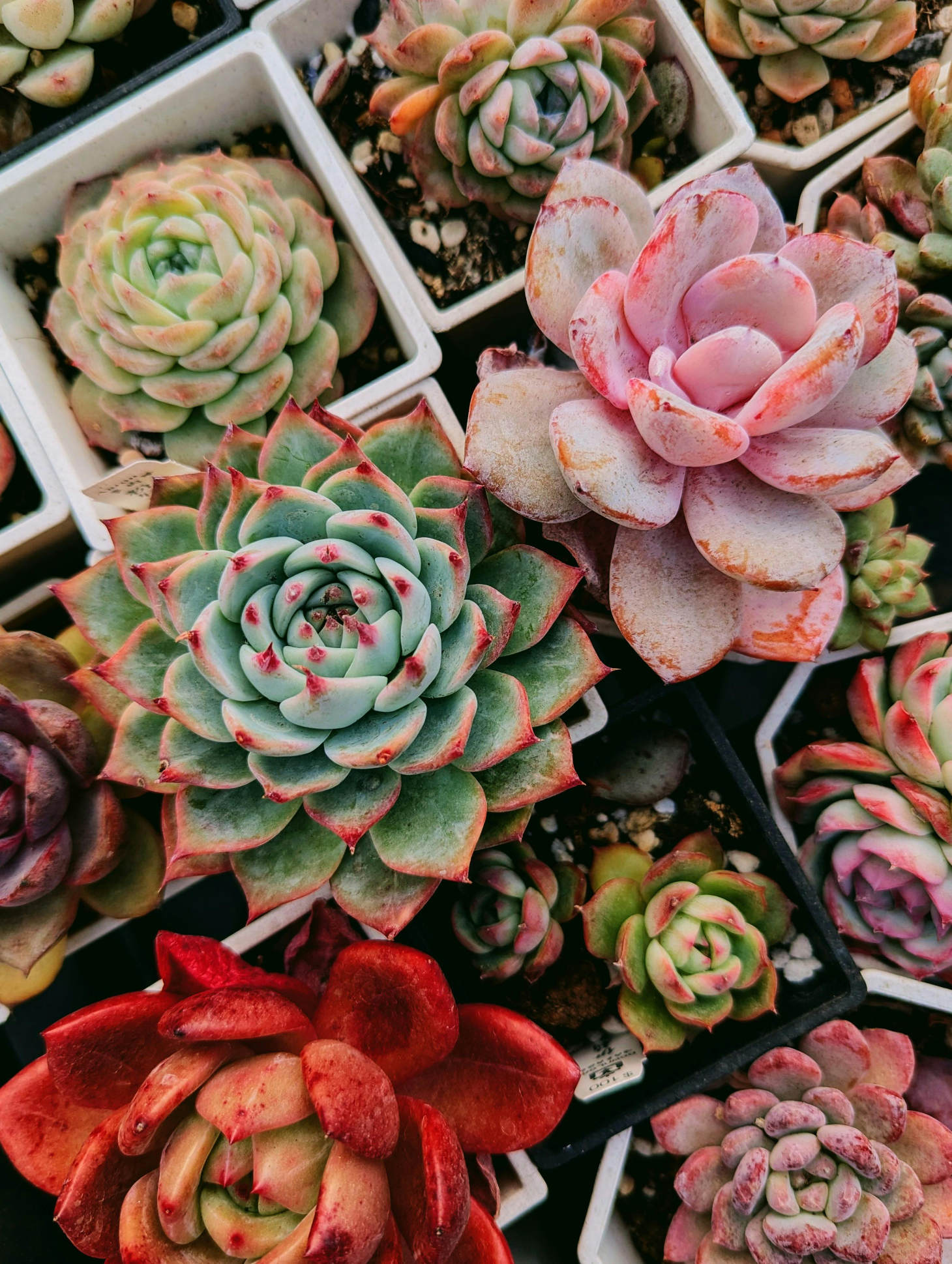Pink Succulent Plants
Pink succulents bring a charming splash of color to any indoor garden. These unique plants combine the low-maintenance appeal of succulents with eye-catching rosy hues.
You can find pink succulents in various shapes and sizes, from small rosettes to trailing vines.
Many pink succulent varieties display their rosy colors on the edges of their leaves, while others have a soft pink blush across their entire surface. Some popular types include Echeveria ‘Pink Champagne’, Sedum ‘Jelly Bean’, and Graptoveria ‘Debbie’.
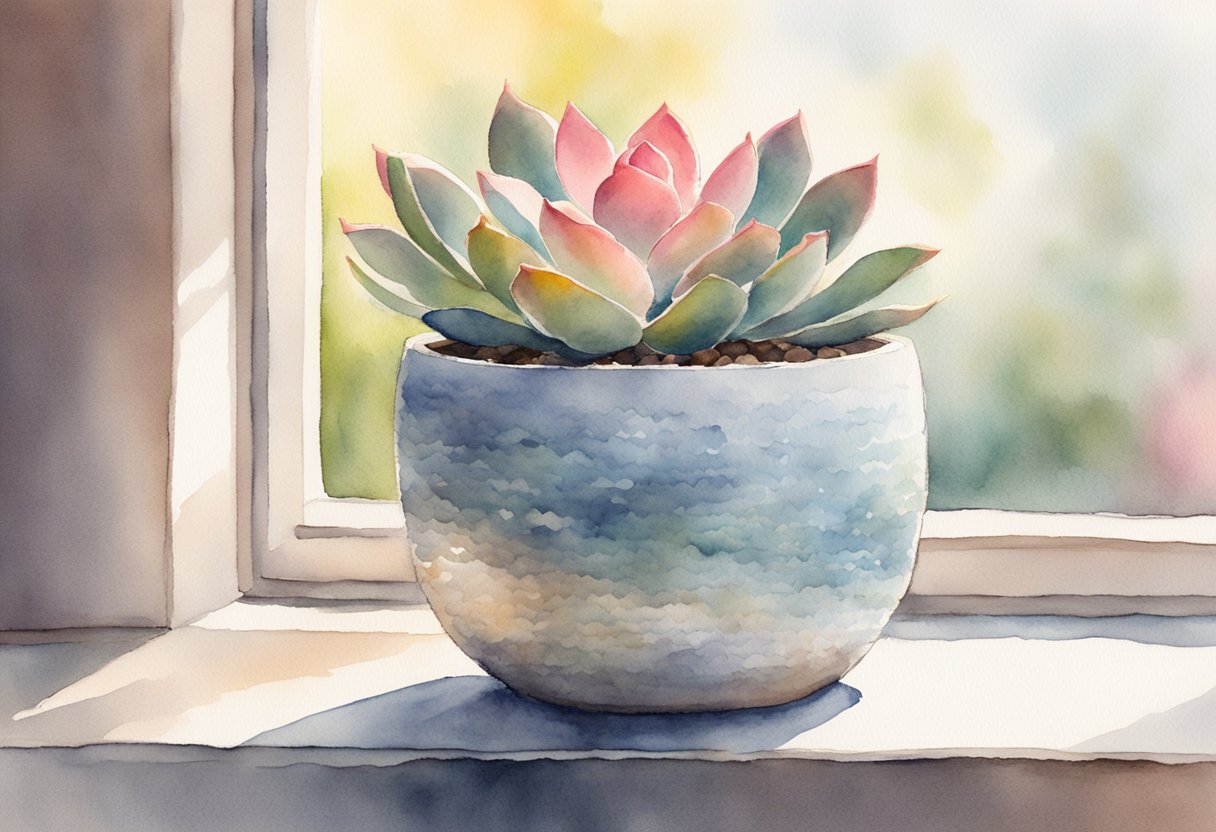
These plants thrive in bright, indirect light and need minimal watering.
Adding pink succulents to your collection is a great way to liven up your space. You can create stunning arrangements by mixing them with green succulents for contrast.
Whether in a small pot on your desk or as part of a larger display, pink succulents are sure to catch your eye and add a touch of beauty to your home.
Characteristics of Pink Succulent Plants
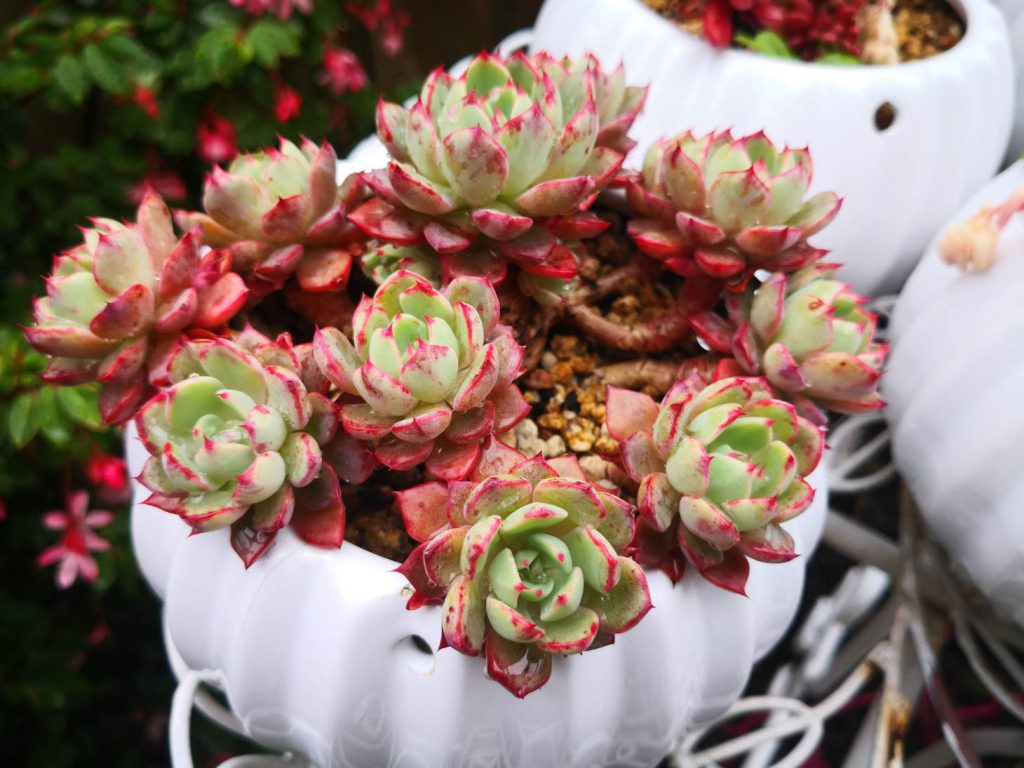
Pink succulents stand out with their eye-catching colors and unique structures. These plants offer a blend of beauty and hardiness that makes them popular choices for gardens and indoor spaces.
Unique Pigmentation
Pink succulents get their color from special pigments in their leaves and stems. Some plants, like pink moonstones, can exhibit a range of colors, from pale pink to deeper shades, including pinkish-orange and brown tones. Others show brighter, more vivid shades.
The pink color can change based on light, temperature, and stress. More sun often leads to deeper pink tones. You’ll notice the pink hues are most intense at the leaf tips or edges.
Some pink succulents keep their color year-round. Others may shift colors with the seasons. Water and nutrients also affect pigmentation. Too much water can make the pink fade. The right care helps keep the pink bright and beautiful.
Plant Structure and Texture
Pink succulents come in many shapes and sizes. You’ll find some with thick, fleshy leaves that store water. Others have thin, delicate leaves.
Many form rosettes, circles of leaves growing from a central point. This pattern gives them a flower-like look even when not in bloom.
The texture of pink succulents varies too. Some have smooth, waxy leaves. Others feel fuzzy or have a powdery coating.
This coating, called farina, protects the plant from sun damage. Pink succulents often have plump leaves that feel firm to the touch. When they bloom, their pink flowers add another layer of texture and interest to the plant.
Popular Types of Pink Succulents
Pink succulents add a soft, charming touch to any plant collection. They come in many shapes and sizes, from rosettes to trailing varieties. Let’s look at some of the most popular pink succulents you can grow.
Echeveria Varieties
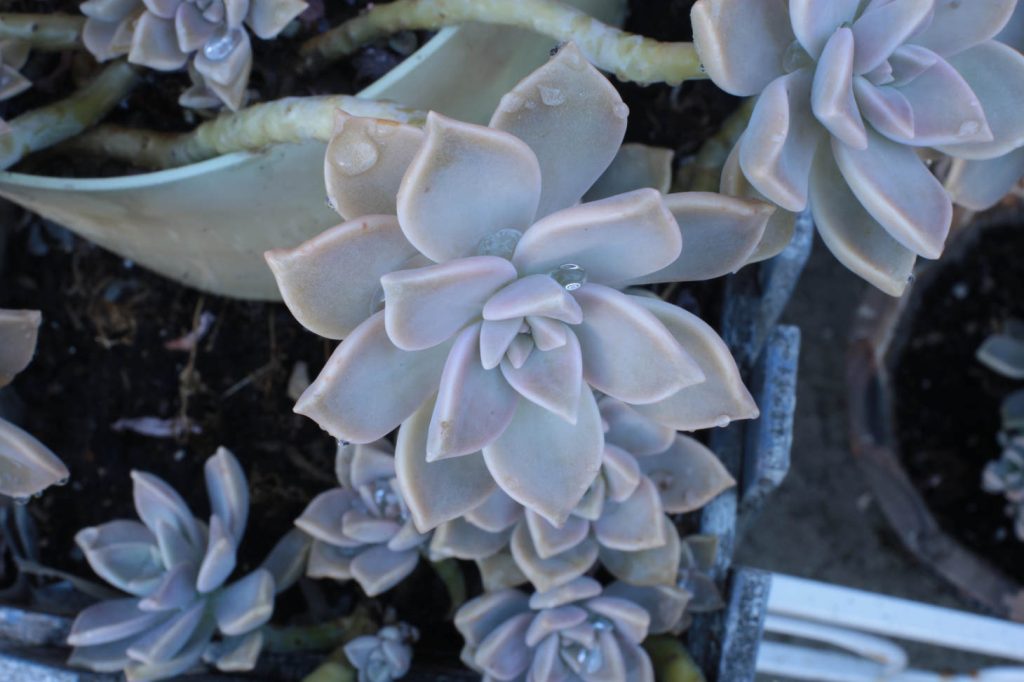
Echeveria ‘Perle von Nurnberg’ is a stunning succulent that features a range of colors including blue-gray, lavender, and pink highlights. Its rosette shape makes it perfect for container gardens or rock gardens. This plant needs bright light to keep its pink color.
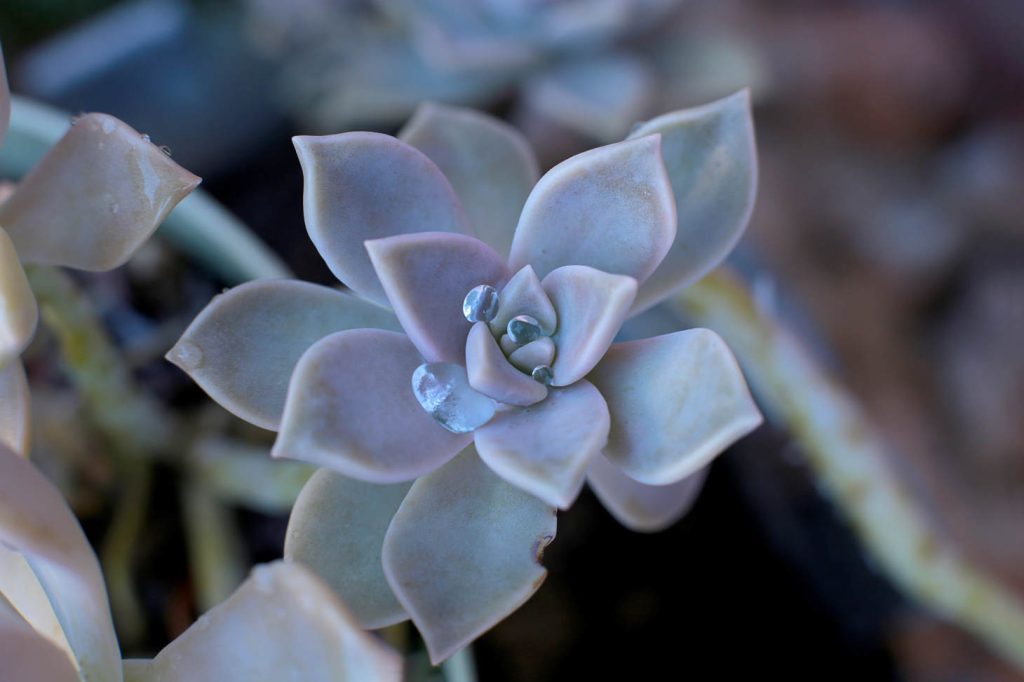
Echeveria laui has plump leaves covered with a thick layer of white powder, and the leaf edges can turn pink. This plant is smaller than ‘Perle von Nurnberg’ and works well in dish gardens.
You can find many other pink Echeveria types. Some have ruffled edges, while others have smooth leaves. All need well-draining soil and careful watering to thrive.
Sedum Species
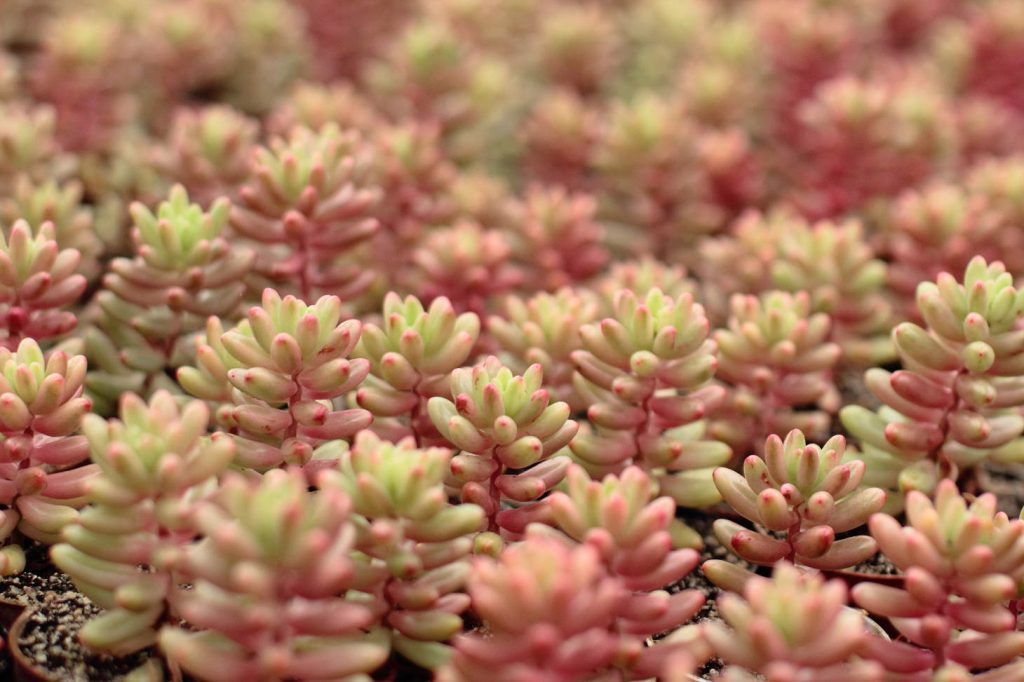
Sedum rubrotinctum ‘Aurora’ is a popular pink succulent. Its small, bean-shaped leaves turn pink in bright light. This plant is also called “Pink Jelly Bean” because of its cute, chubby leaves.
Sedum rubrotinctum is another great choice. It starts green but turns pinkish-red in full sun. This plant is easy to grow and spreads quickly, making it good for ground cover.
Both types of Sedum need lots of sun to keep their pink color. They’re drought-tolerant and perfect for rock gardens or hanging baskets.
Crassula Varieties
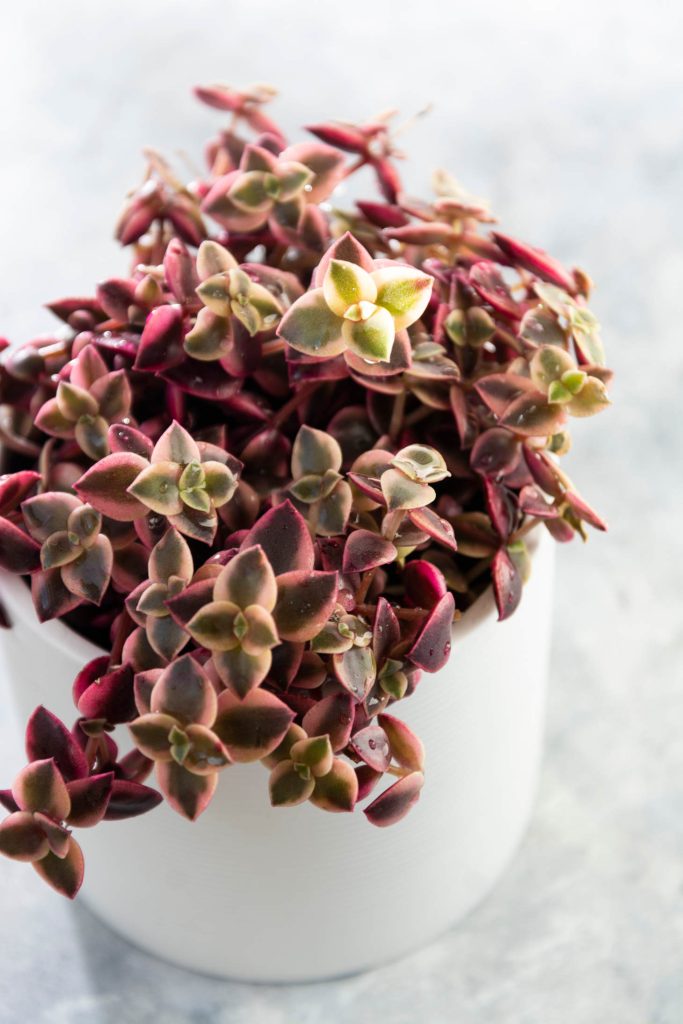
Crassula pellucida ‘Variegata’ has heart-shaped leaves with a variegation of green, creamy white, and rosy pink. It’s a low-growing plant that spreads out, making it great for hanging baskets. This plant benefits from some shade to keep its colors bright, especially during intense sunlight, but it can also thrive in full sun.
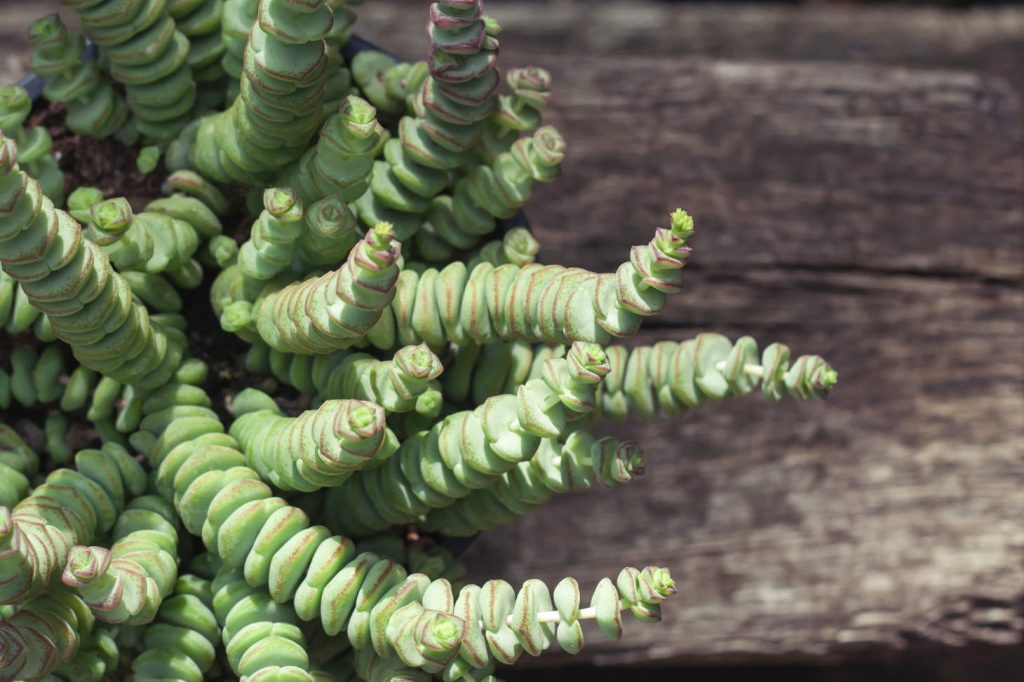
You can also try Crassula perforata, which has triangle-shaped leaves that turn pink in bright light. It’s a fun, unique plant that adds interest to any succulent collection. (Although the one featured above needs more light to gain more pink color!)
Caring for Pink Succulents
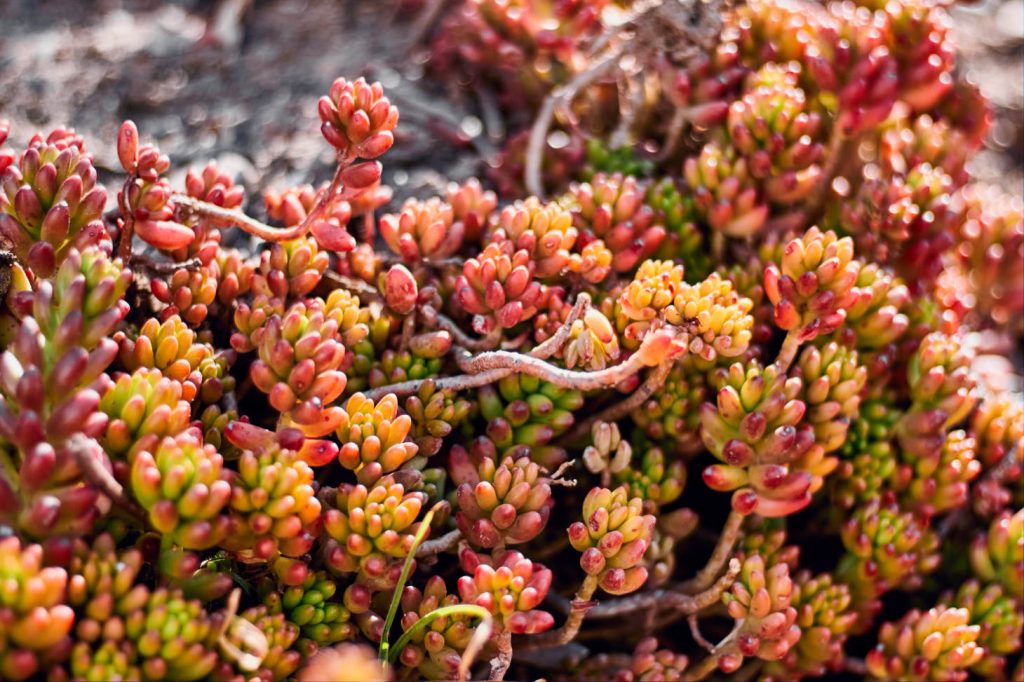
Pink succulents need specific care to keep their vibrant colors and stay healthy. The main things to focus on are light, water, and soil.
Light Requirements
Pink succulents need lots of bright light to maintain their color. Put them near a sunny window that gets 6-8 hours of sunlight daily. South-facing windows work best.
If you don’t have enough natural light, use grow lights for 12-14 hours a day.
Be careful with direct afternoon sun. It can burn the leaves. Use sheer curtains to filter harsh light. Rotate the pot every few weeks so all sides get even light.
Without enough light, pink succulents may lose their color and turn green. Watch for signs of stretching or pale new growth. These mean your plant needs more light.
Watering Needs
Pink succulents don’t need much water. Let the soil dry out completely between waterings.
In spring and summer, water every 7-10 days. In fall and winter, cut back to every 2-3 weeks.
When you water, soak the soil until water runs out the drainage holes. Empty the saucer so the plant doesn’t sit in water. Never let water collect in the rosette center.
Signs of overwatering include yellow, mushy leaves. Underwatered plants have wrinkled leaves. Adjust your watering schedule based on these signs.
Soil and Fertilization
Use well-draining soil made for cacti and succulents. Mix regular potting soil with coarse sand or perlite to improve drainage. Good drainage prevents root rot.
You could mix your own, but that means buying lots of ingredients you might not use. Our succulent soil is the easy answer! It’s perfectly blended for drainage and healthy growth, so your pink succulents thrive. Skip the mess and get growing! Shop now!
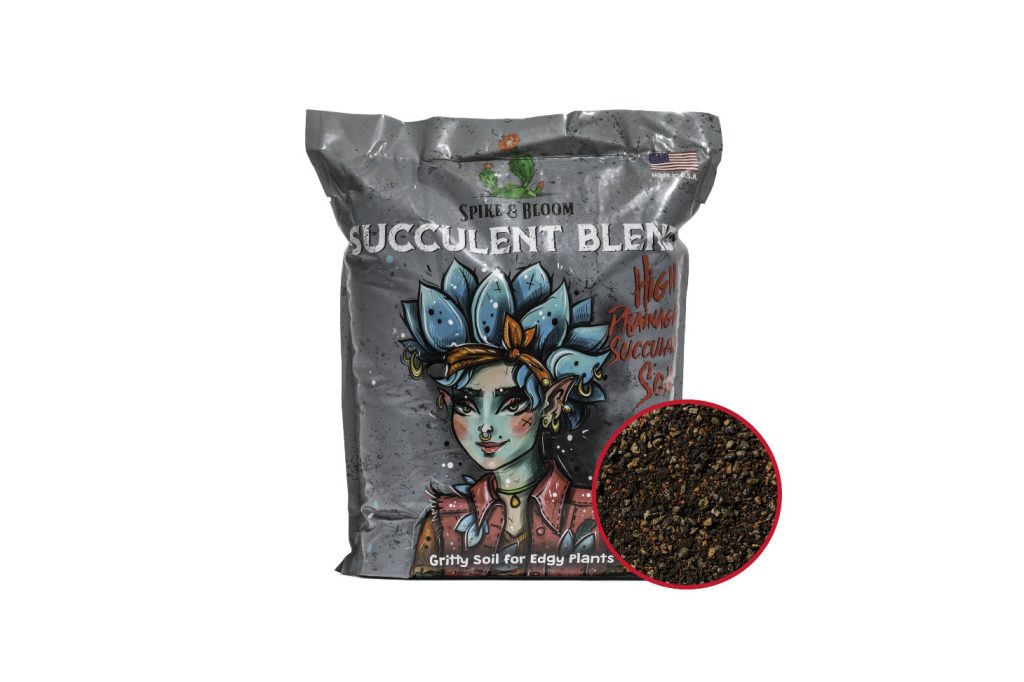
Repot your pink succulent every 2-3 years in fresh soil. Choose a pot with drainage holes that’s 1-2 inches wider than the current one.
Fertilize every 2-4 weeks during the growing season. Use a balanced, water-soluble fertilizer diluted to half strength. Apply every 4-6 weeks from spring to early fall. Don’t fertilize in winter when growth slows down.
Creating a Pink Succulent Garden
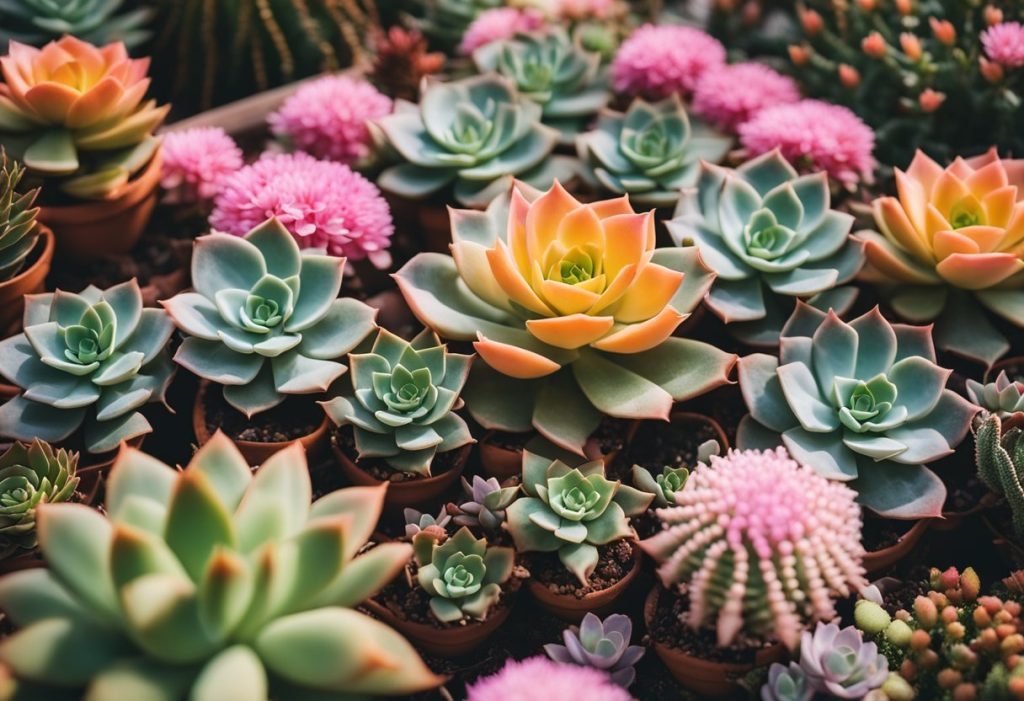
Pink succulents add a soft, charming touch to any garden. They come in many shapes and sizes, from small rosettes to trailing varieties. With the right design and plant pairings, you can create a stunning pink succulent display.
Design Principles
Start with a focal point using a large pink succulent like Echeveria ‘Afterglow’. Place it in the center of your arrangement for better visibility, or at the back if the arrangement is oriented towards a wall or fence.
Vary the heights and textures around it for visual interest. Use small, low-growing pink succulents in the front.
Group plants in odd numbers for a natural look. Mix in some green succulents to highlight the pink hues. Add depth with a hanging planter filled with trailing pink varieties.
Choose a container with good drainage. Use well-draining succulent soil. Place your garden where it will get bright, indirect light for 6-8 hours a day.
Complementary Plant Pairings
Pair pink succulents with plants that enhance their soft color. Blue or purple succulents create a nice contrast. Try Senecio mandraliscae (Blue Chalksticks) or Echeveria ‘Perle von Nürnberg’.
Add white succulents for a fresh, clean look. Sempervivum arachnoideum (Cobweb Houseleek) works well.
For texture, mix in some spiky plants like Aloe ‘Pink Blush’.
Include succulents with pink flowers for extra color. Sedum spurium ‘Dragon’s Blood’ and Graptosedum ‘California Sunset’ bloom pink. These will add pops of color throughout your garden.
Propagation Techniques
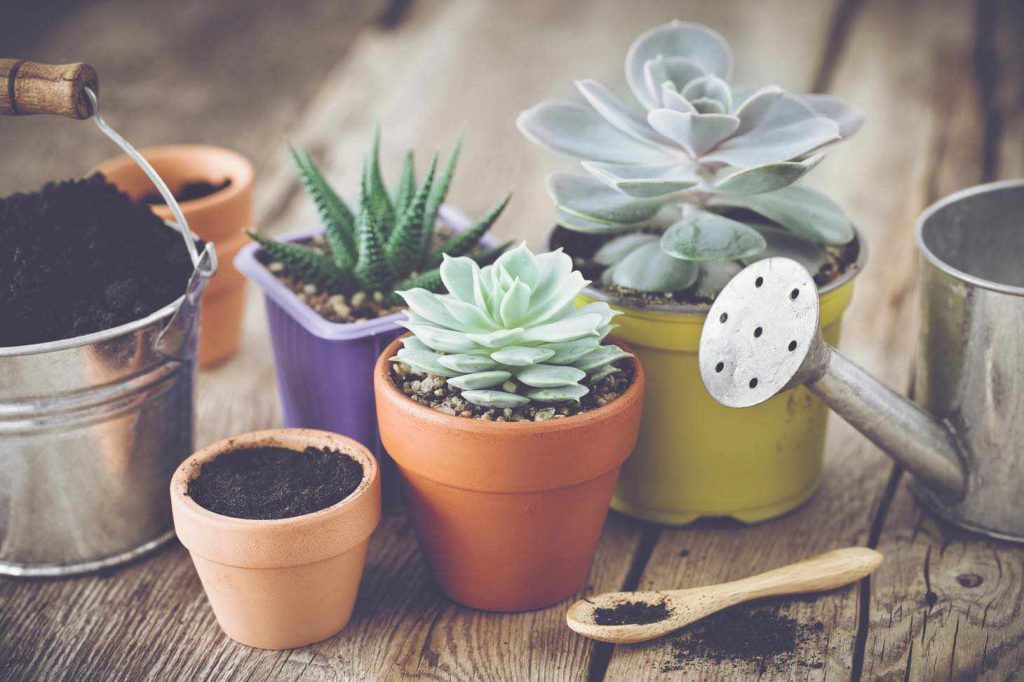
Pink succulents are easy to grow from leaves or offshoots. You can make new plants without much effort. These methods work well for many pink varieties.
Leaf Cuttings
To propagate from leaves, gently twist a leaf off the plant. Make sure you get the whole leaf, including the base.
Let the leaf dry for a day or two until the cut end forms a callus.
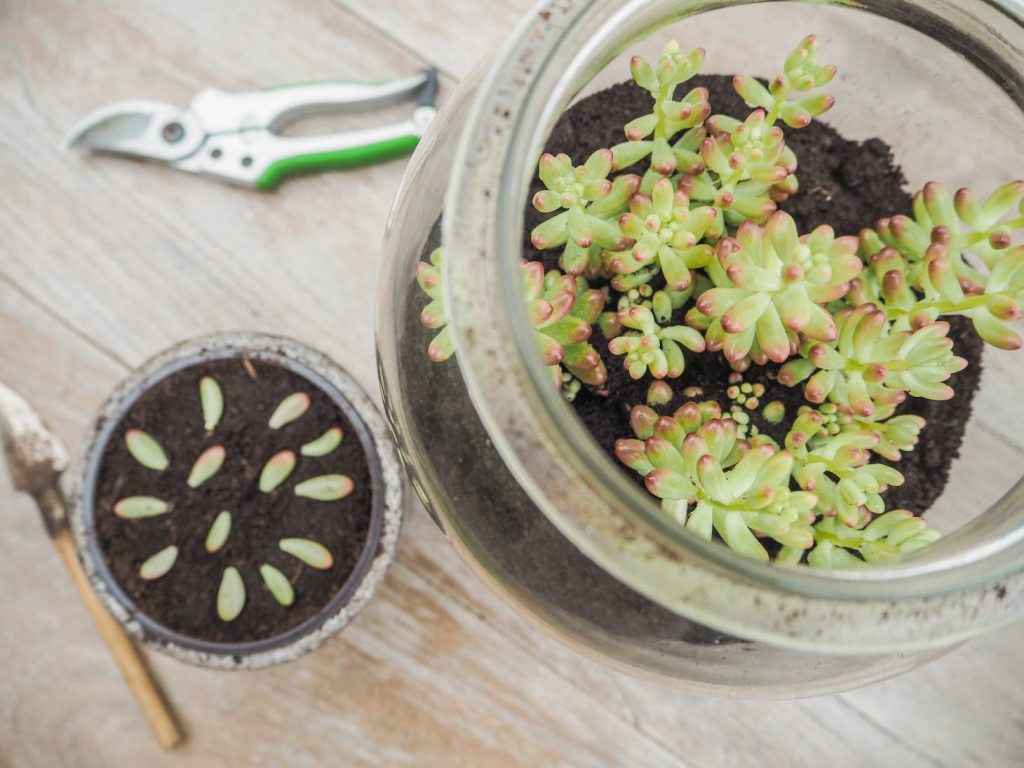
Place the leaf on top of well-draining soil. Mist the soil lightly, but don’t soak it. Keep the leaf in bright, indirect light.
After a few weeks, tiny roots and a new plantlet will grow from the base of the leaf. Once the new plant is big enough, you can plant it in its own pot.
This method works great for Graptopetalum paraguayense, also known as ghost plant. Its plump leaves root easily.
Offsets and Pups
Many pink succulents grow baby plants called offsets or pups around their base. These are easy to separate and grow into new plants.
Wait until the offset is at least one-third to one-half the size of the mother plant, ensuring it has a long enough stalk and a few rows of leaves. Gently remove it from the mother plant, keeping some roots attached if possible.
Let the offset dry for 1 to 7 days, then plant it in well-draining soil. Water sparingly until new growth appears.
Graptopetalum pachyphyllum often produces offsets you can separate. This helps you grow your collection quickly.
Troubleshooting Common Issues
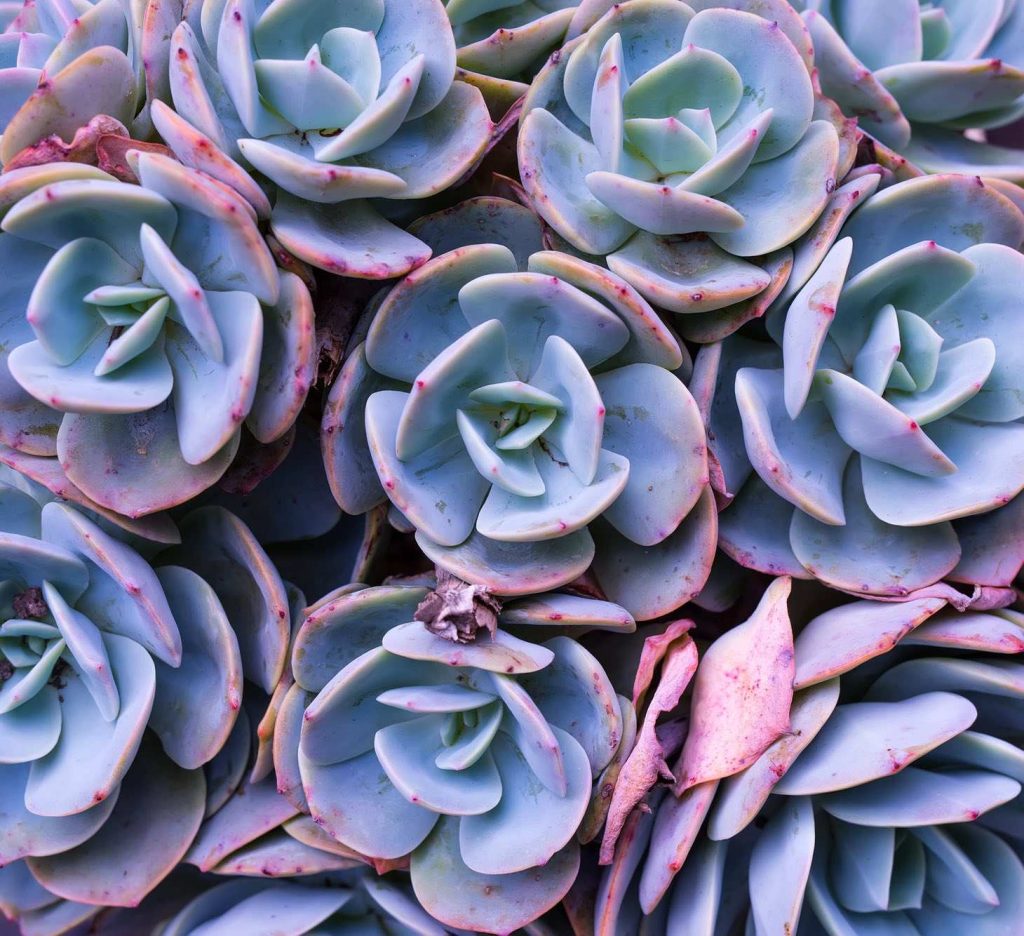
Pink succulents can face several challenges. Knowing how to spot and fix problems will help keep your plants healthy and thriving.
Pest Infestations
Mealybugs are a common pest for pink succulents like Crown of Thorns. Look for white, cottony spots on leaves and stems.
To get rid of them, dab the bugs with rubbing alcohol on a cotton swab. For larger infestations, spray the plant with a mix of water and rubbing alcohol.
Spider mites can also attack succulents. You’ll see tiny webs between leaves.
Spray the plant with water to knock them off. For bad cases, use an insecticidal soap.
Scale insects look like small bumps on stems. Scrape them off gently with your fingernail. Then treat the plant with neem oil spray.
Diseases
Root rot is a big problem for pink succulents. It’s caused by overwatering. Signs include soft, mushy leaves that fall off easily. The stem may turn black at the base.
To fix root rot:
- Remove the plant from its pot
- Cut away any soft, black roots
- Let the plant dry out for a day or two
- Repot in fresh, well-draining soil
Leaf spot diseases cause dark spots on leaves. Remove infected leaves and avoid getting water on the leaves when watering.
Environmental Stresses
Too much direct sun can burn pink succulents like Pink Frills. You’ll see brown or white patches on leaves.
Move the plant to a spot with bright but indirect light.
Cold damage causes dark spots or mushy areas on leaves. Keep pink succulents above 50°F (10°C). Move them indoors if temps drop lower.
Underwatering makes leaves wrinkle and drop off. Water when the top inch of soil is dry. But don’t overdo it, Euphorbia milii and other pink succulents hate soggy soil.
Seasonal Care and Maintenance
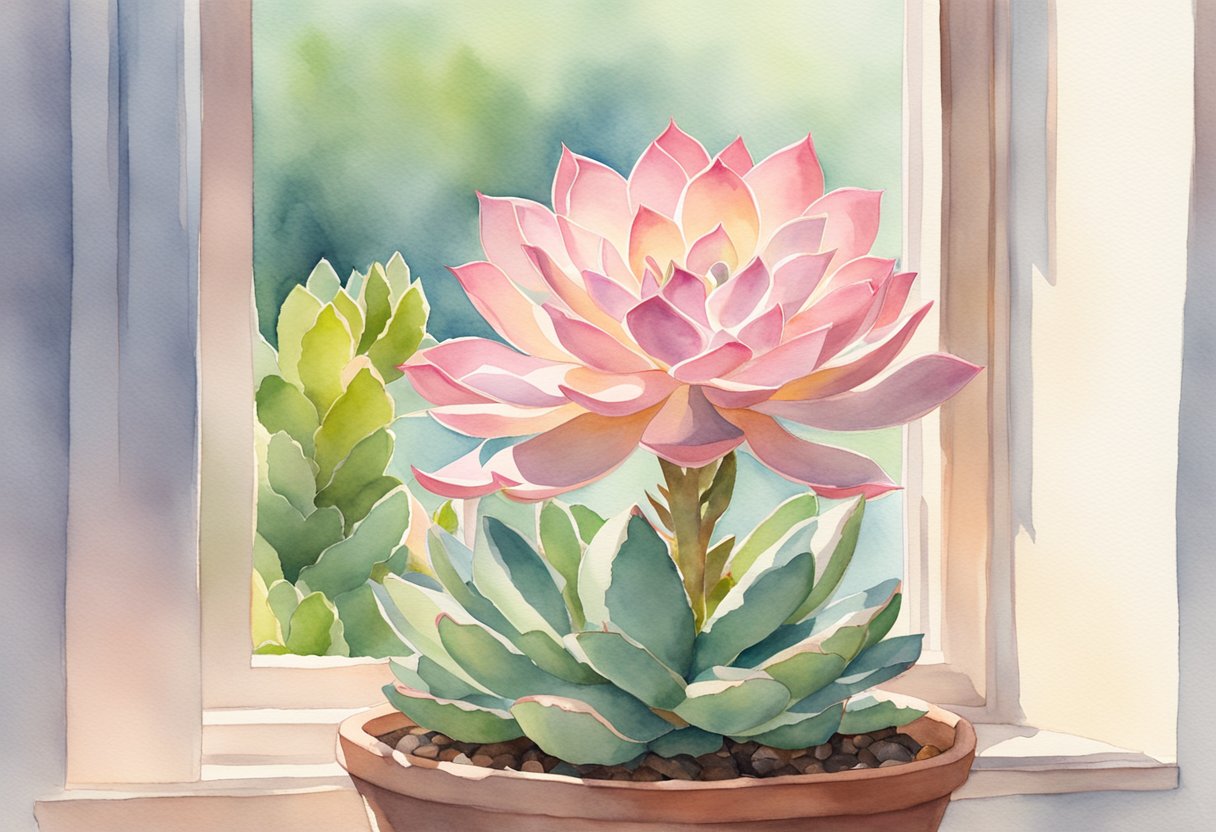
Pink succulents need different care as the seasons change. Adjusting your routine helps them stay healthy year-round.
Winter Care
In winter, pink succulents need less water. Cut back on watering to once every 2-3 weeks. Make sure the soil dries out between waterings. Move plants away from cold windows to avoid damage.
For pink aeoniums, reduce fertilizer in winter. They go dormant and don’t need extra nutrients.
Keep October daphne in a bright spot. It can handle cooler temps but needs protection from frost.
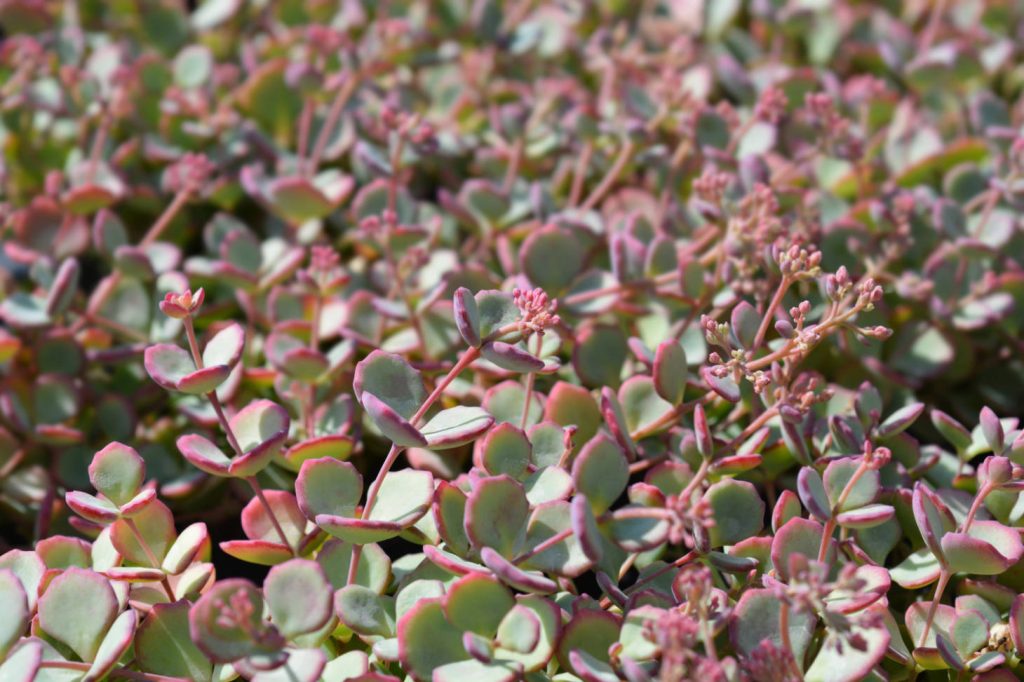
Turtle vine grows slower in winter. Water it less and watch for signs of overwatering.
Summer Requirements
Summer brings more light and heat. Water pink succulents more often, every 7-10 days. Check the soil first. It should be dry before watering.
Pink aeoniums may need shade in hot afternoons. Too much sun can burn their leaves.
October daphne likes full sun. It may need extra water in summer heat, but care should be taken to avoid overwatering, as it is very sensitive to wet soil.
Turtle vine grows faster in summer. It needs bright, indirect light and should be watered when the top inch of soil is dry.
Many pink succulents benefit from a balanced fertilizer in summer. Use a half-strength mix once a month.
Potting and Repotting Pink Succulents
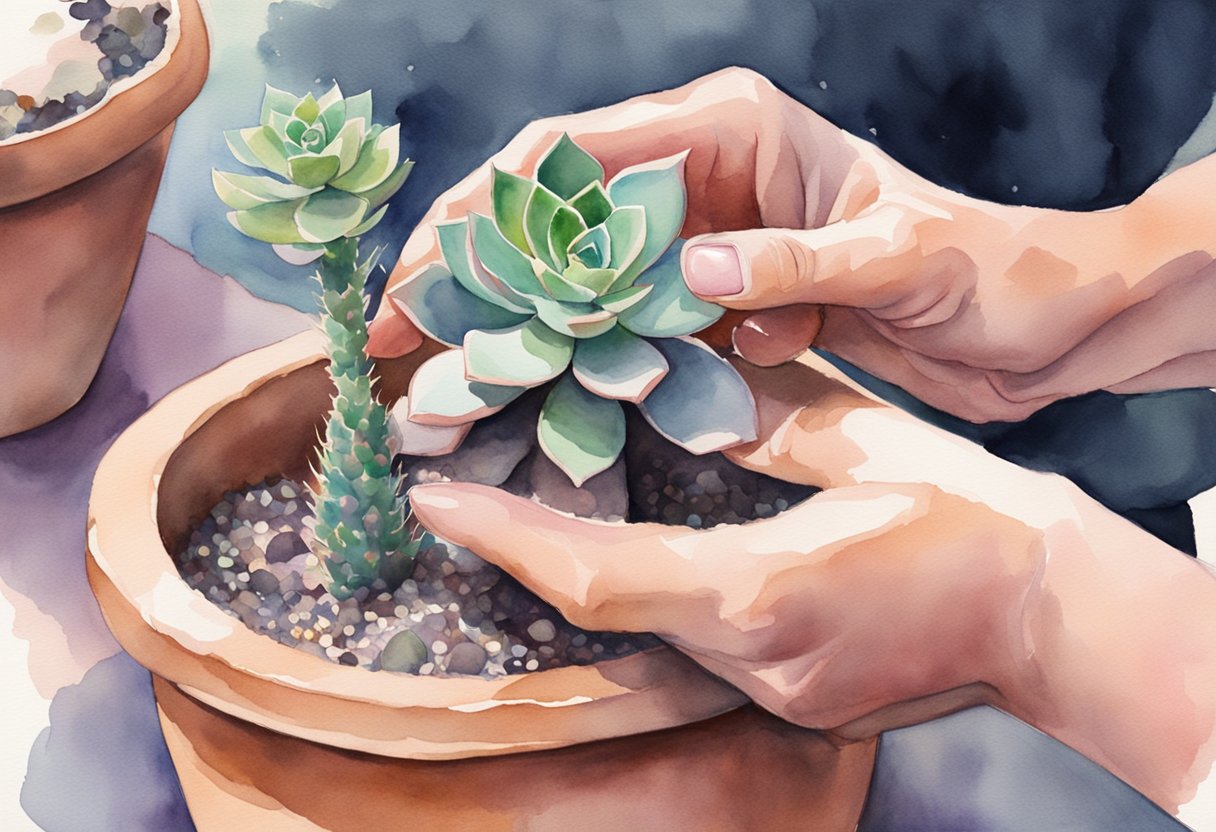
Pink succulents need proper potting and repotting to stay healthy. The right container and soil mix are key. Follow these steps to give your pink succulent a good home.
Choosing the Right Container
Pick a pot 2 inches wider and deeper than your pink succulent. Make sure it has drainage holes. Clay pots work well for pink succulents like Kalanchoe ‘Pink Butterflies’. They let extra water escape.
Use a pot that fits the plant’s size. A too-big pot can lead to root rot. For small plants like Tippy Echeveria, start with a pot that is 10% larger than the width of the succulent. A 2.5-inch pot is more appropriate. Move up in size as the plant grows.
Plastic pots are fine too. They’re light and keep moisture longer. This can be good for young plants.
Repotting Steps and Tips
Start by getting cactus or succulent soil mix. You can make your own by mixing equal parts potting soil, coarse sand, and perlite. Fill the new pot 3/4 full with soil.
Take your pink succulent out of its old pot. Gently shake off extra dirt. Look at the roots. Cut off any that look dead or too long.
Put the plant in the new pot. Add more soil around it. Press lightly to remove air pockets. Leave the soil level 1/2 inch below the pot’s rim, ensuring no roots are visible.
Don’t water right away. Wait a week to let any root damage heal. Then water lightly. Place in bright, indirect light to help it settle in.
Companion Plants for Pink Succulents
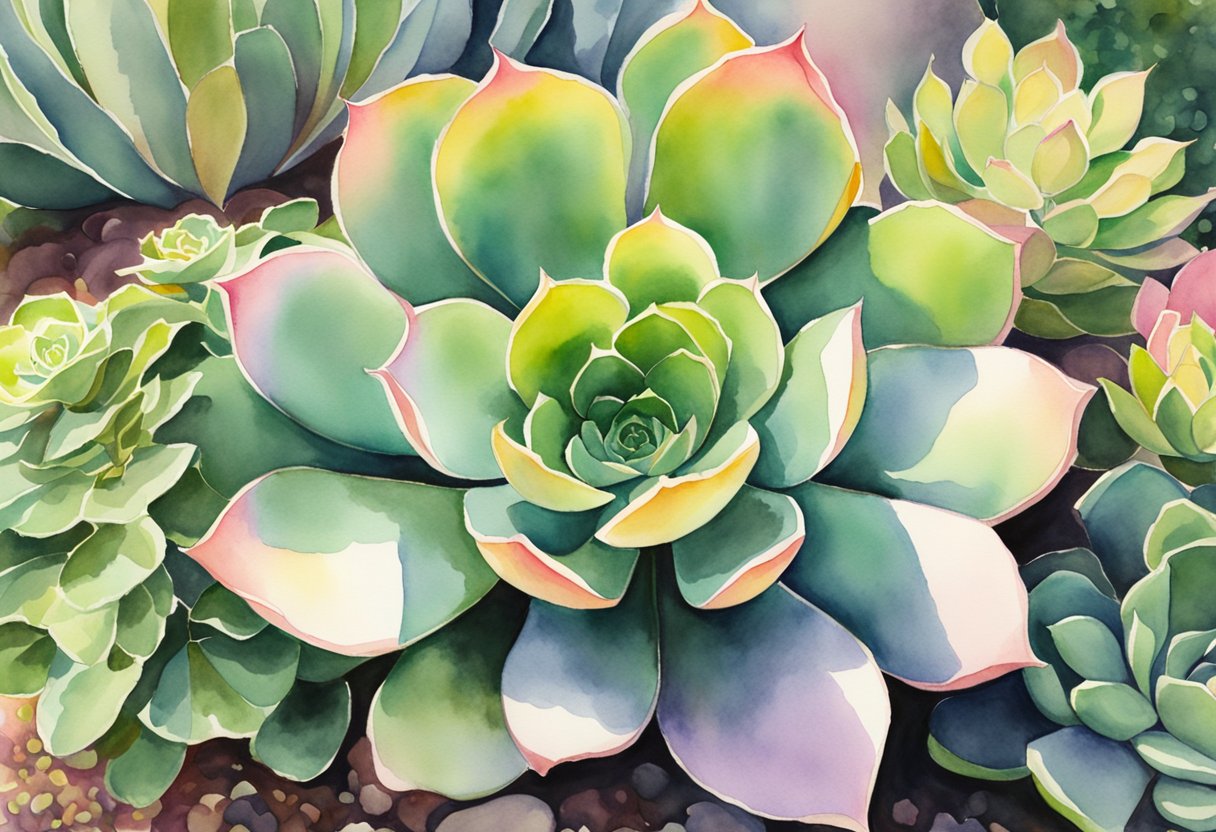
Pink succulents look great with other plants that complement their soft hues. The right companions can enhance their beauty and create eye-catching displays.
Color Combinations
You can pair pink succulents with plants in shades of green, blue, or purple for striking contrasts. Try planting Taurus echeveria next to blue fescue grass or lavender. The cool tones will make the pink pop.
For a softer look, combine pink succulents with white or cream flowers. Candytuft or white alyssum work well. You can also use silver-leaved plants like dusty miller to highlight pink tones.
Don’t forget about foliage colors. Plants with burgundy or bronze leaves make pink succulents stand out. Coleus or purple fountain grass are good options.
Texture Contrasts
Mix different leaf shapes and sizes to add visual interest. Pair the smooth, plump leaves of Echeveria elegans with spiky plants. Ornamental grasses or yucca provide nice texture contrasts.
You can also use trailing plants to soften edges. String of pearls or burro’s tail look great spilling over the sides of pots or rock gardens with pink succulents.
For a bold statement, plant pink succulents near plants with large leaves. Hosta or caladium create an interesting size difference. This makes your pink succulents more noticeable.
Inspirational Ideas for Displaying Pink Succulents
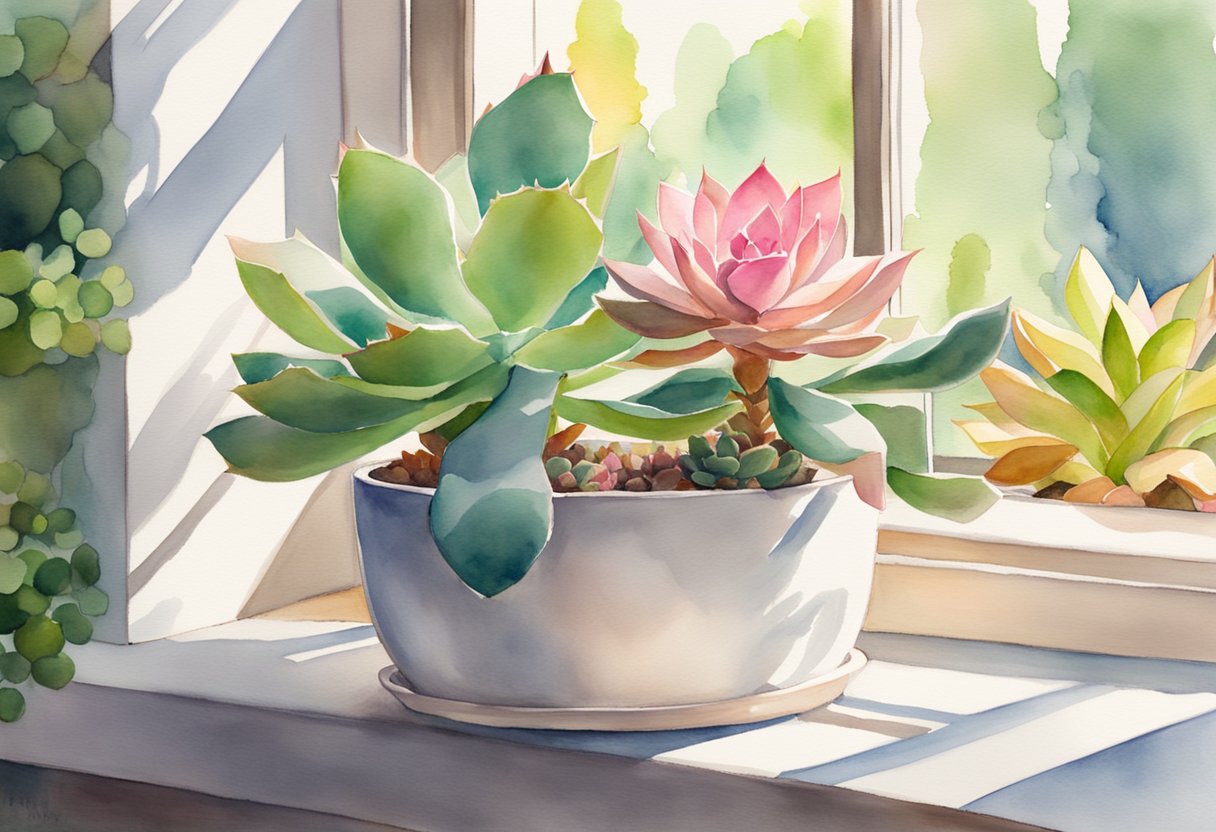
Pink succulents add a soft, elegant touch to any space. These unique plants can be showcased in creative ways both indoors and outdoors.
Indoor Arrangements
Create a stunning centerpiece by grouping pink succulents in a shallow dish. Use a mix of sizes and shades for visual interest. Place larger plants like Hylotelephium sieboldii in the center, surrounded by smaller varieties.
Try a vertical garden with pink succulents. Mount them on a wooden frame or in wall-mounted pockets. This eye-catching display saves floor space and acts as living art.
For a desk or windowsill, plant a mini pink succulent garden in a teacup or vintage tin. Use well-draining soil and add pebbles on top for a polished look.
Outdoor Landscaping
Plant pink ice plants in rock gardens or along pathways. Their low-growing habit and vibrant blooms make them perfect for ground cover.
Create a pink succulent border around flower beds or along a fence line. Mix different heights and textures for a dynamic look.
Use large containers to showcase pink desert plants on a patio or balcony. Group pots of various sizes for a layered effect. Add rocks or pebbles as mulch to enhance the desert theme.
Plant pink succulents in crevices of a stone wall or between pavers. This unexpected touch adds whimsy to your outdoor spaces.
Sustainability and Conservation
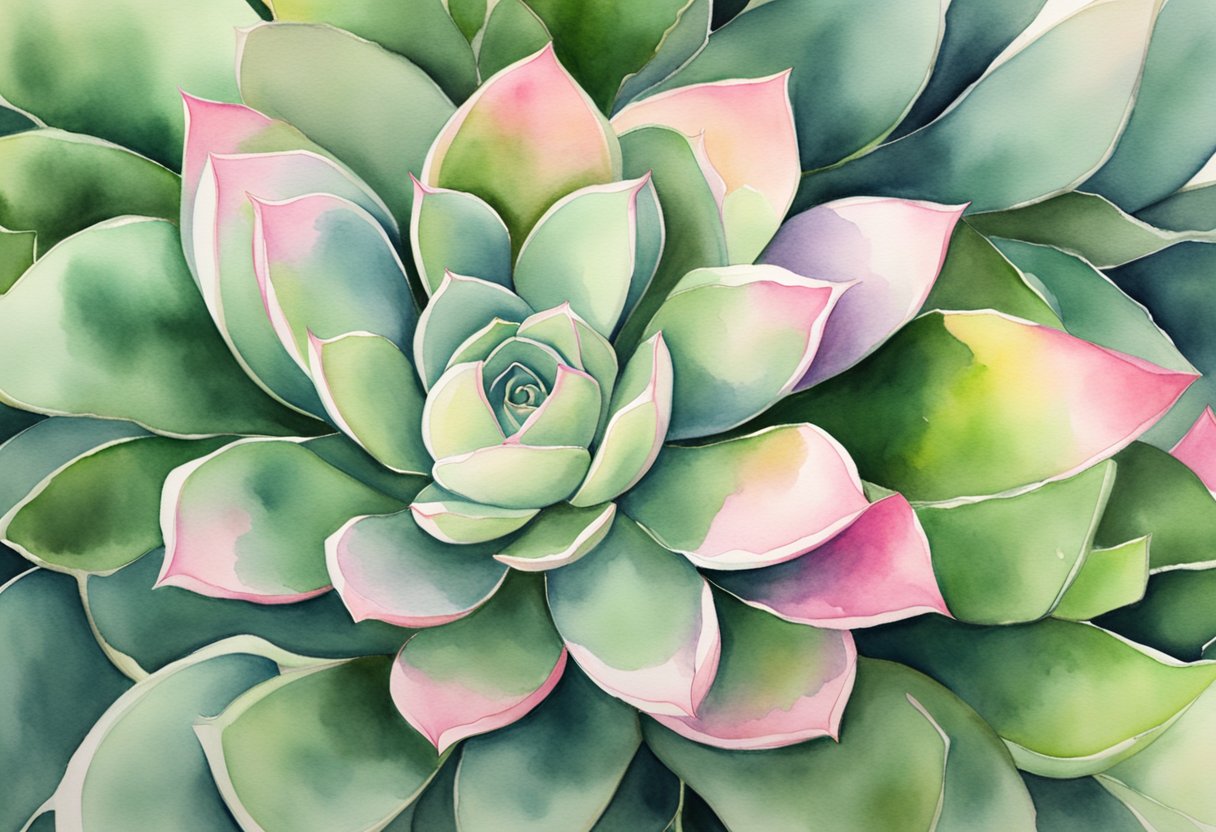
Pink succulents require proper care and maintenance to thrive in cultivation. Responsible growing and water-saving methods help preserve these plants for the future.
Ethical Cultivation
Growing pink succulents ethically means getting plants from reputable nurseries. Avoid taking plants from the wild. This protects natural habitats.
Buy echeveria ‘laui’, graptoveria ‘debbie’, and pink moonstones from licensed sellers. These popular pink varieties are often propagated sustainably.
Learn proper care techniques. This helps your plants thrive and reduces the need to replace them. Share cuttings with other gardeners to spread plants without harming wild populations.
Support conservation efforts that protect succulent habitats. Look for organizations working to preserve areas where pink succulents naturally grow.
Water Conservation
Pink succulents are great for saving water in your garden. Their ability to store moisture makes them perfect for dry climates.
Use a well-draining soil mix for your pink succulents. This prevents overwatering and root rot. Water deeply but infrequently to mimic natural rainfall patterns.
Group pink succulents with other low-water plants. This creates a cohesive, water-wise landscape. Use mulch around your plants to retain soil moisture and reduce evaporation.
Collect rainwater for your succulents when possible. This sustainable practice reduces reliance on treated water sources. During dry spells, prioritize watering newly planted or young plants, as they are at greater risk of injury, while also ensuring established plants receive adequate water.
Frequently Asked Questions
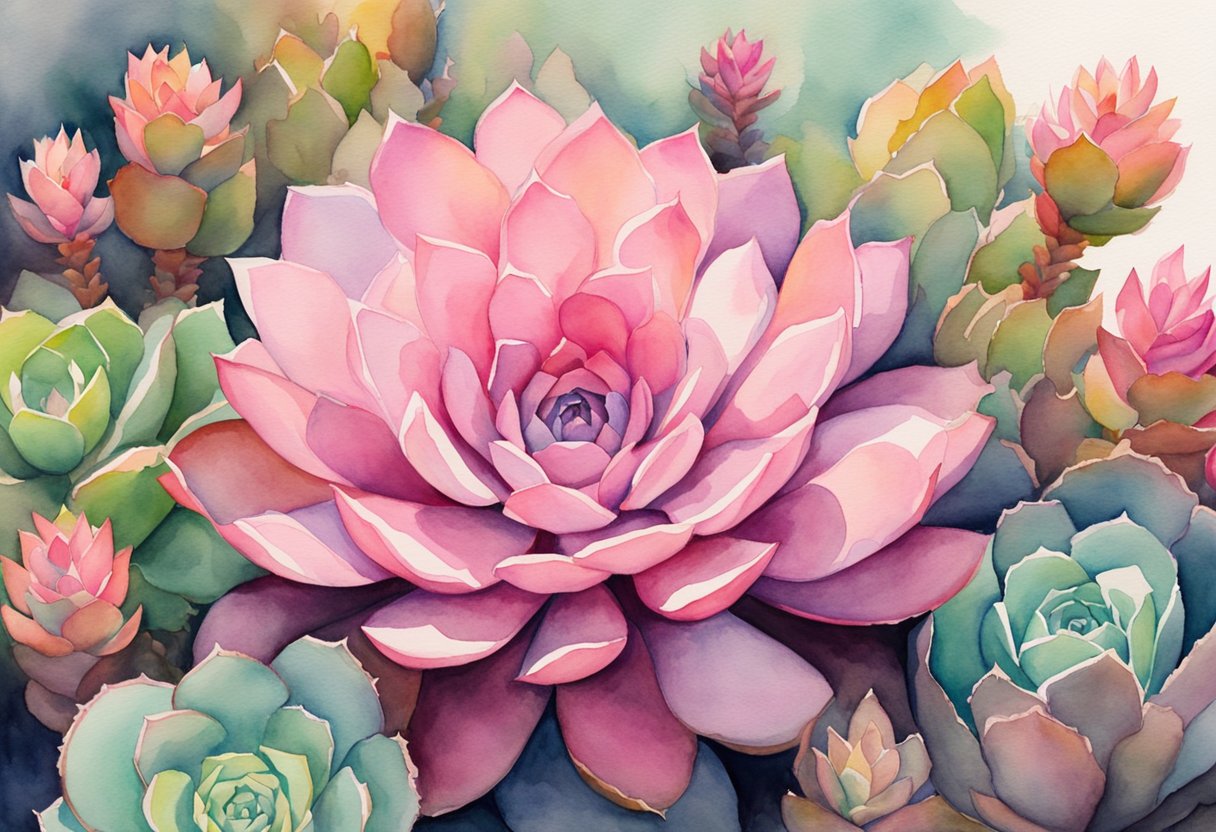
Pink succulents need special care to maintain their color. There are many varieties with pink hues. Proper light, water, and soil help them thrive.
How should one care for pink succulents?
Give pink succulents bright, indirect light. Water them sparingly when the soil is dry. Use well-draining succulent soil. Protect them from extreme heat and cold. Fertilize lightly during the growing season.
What varieties of succulents exhibit pink coloration?
Some pink succulents include Echeveria ‘Perle von Nurnberg’, Sedum ‘Jelly Bean’, and Graptopetalum ‘Ghosty’. Kalanchoe blossfeldiana has pink flowers. Sempervivum ‘Cebenese’ turns pink in full sun.
Can you provide tips for cultivating succulents with pink flowers on long stems?
Plant pink-flowering succulents in pots with drainage holes. Use succulent soil mix. Place them where they’ll get 6+ hours of sun daily. Water when the top inch of soil is dry. Prune stems to encourage branching.
What are some common names of pink succulent plants?
Pink succulents have fun nicknames. Some are called Pink Moonstones, Jelly Beans, Ghost Plant, and Plush Plant. The Pink Ice Plant is known for its vivid flowers.
How do you ensure optimal growth for a pink Echeveria succulent?
Give Echeverias lots of light, but protect from harsh afternoon sun. Water deeply but infrequently. Use a pot with drainage holes. Apply diluted fertilizer monthly in spring and summer. Remove dead leaves to prevent pests.
Which succulents have pink edges and how can they be maintained?
Echeveria ‘Afterglow’ and Graptoveria ‘Fred Ives’ have pink edges.
To keep the color, give them plenty of light. Avoid overwatering. Use sandy, well-draining soil. Protect from frost in winter.

